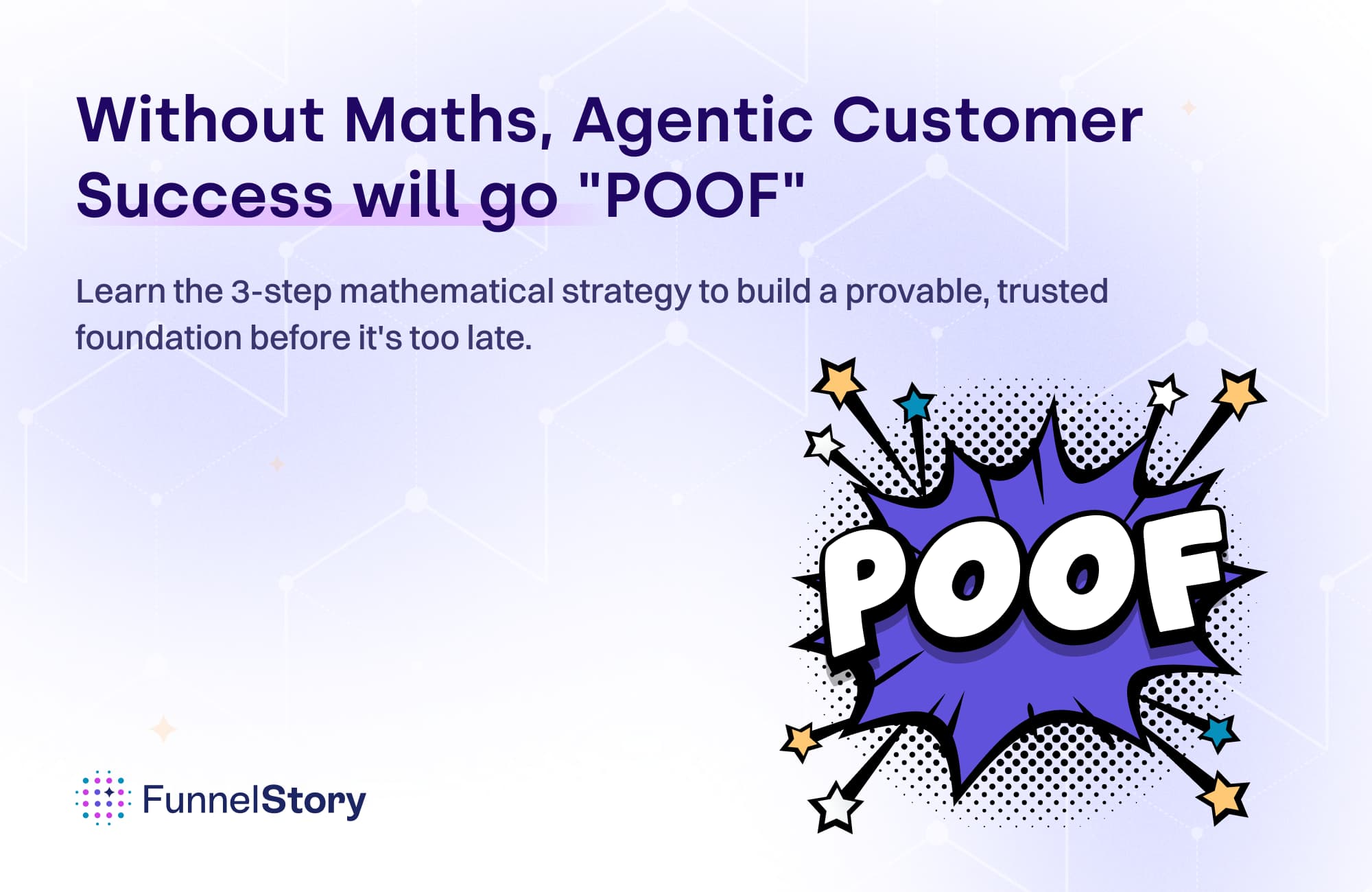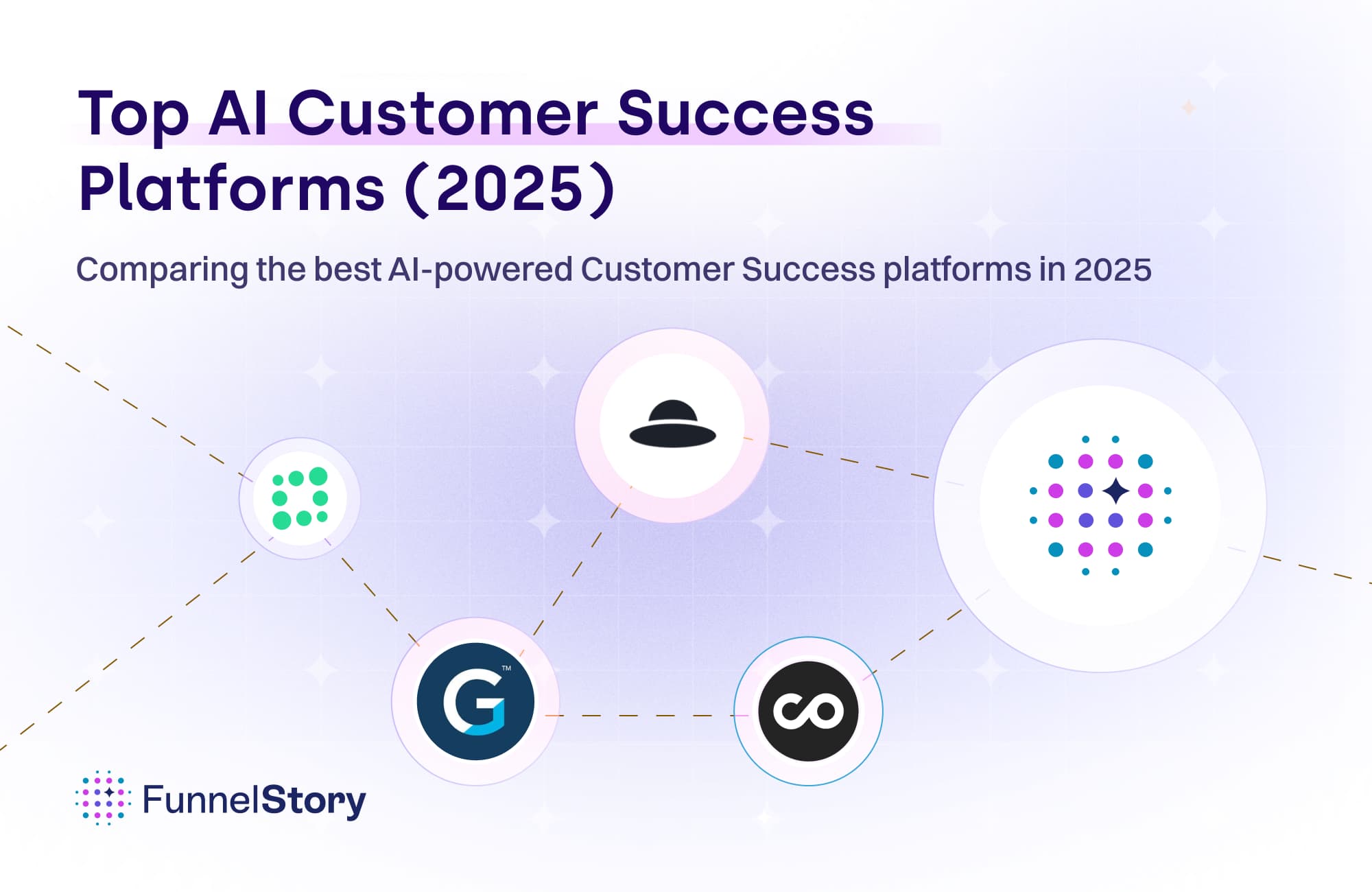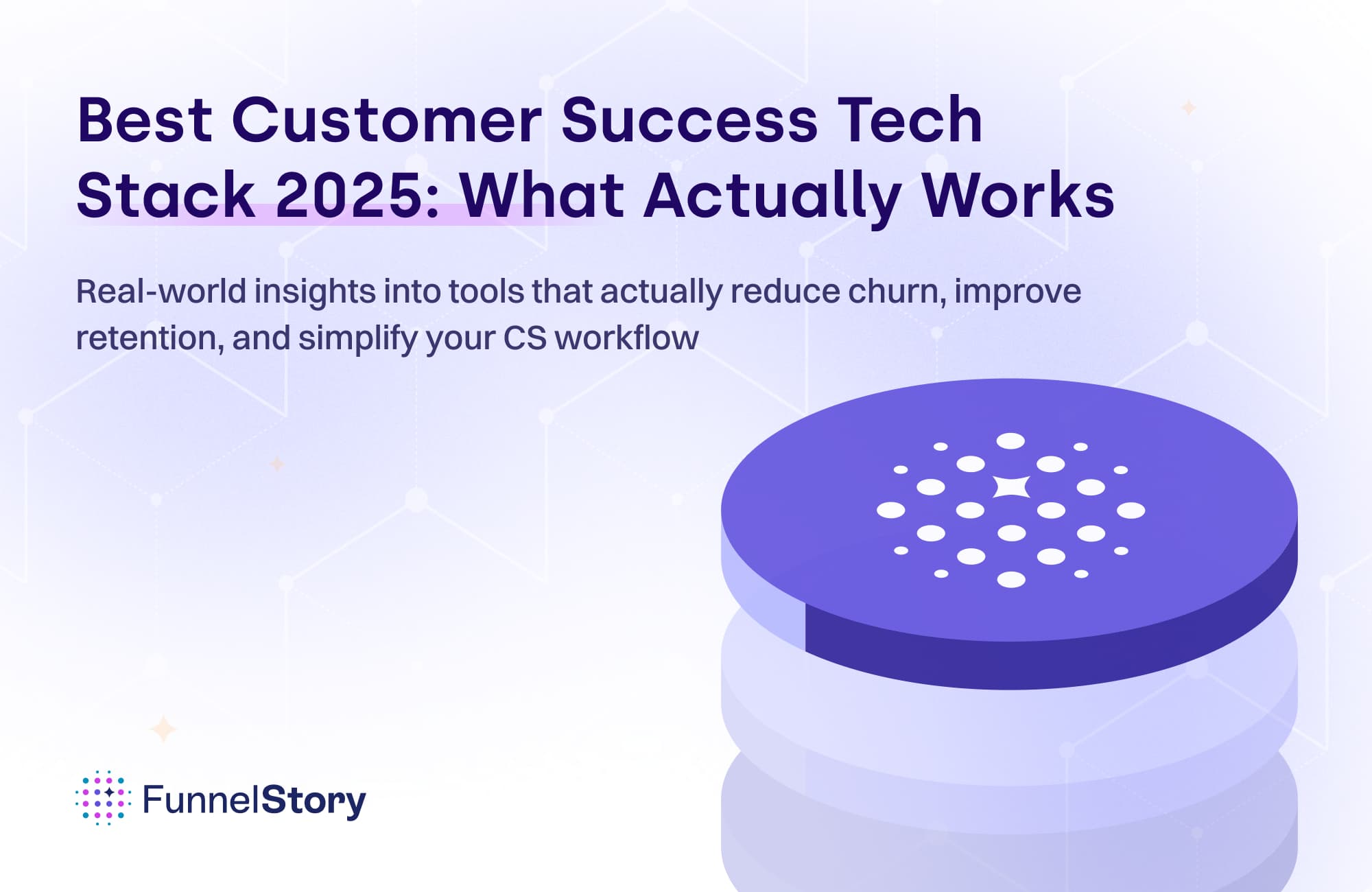In this article
The Quantum Future of Customer Success Teams
Discover how AI is rewiring customer success with new roles, empathetic leadership, and organizational design. Learn about FunnelStory AI fits in this new organisational archetype

By Alok Shukla
Cofounder and CEO
Oct 11, 2025
4 min read
TL;DR AI isn’t replacing CS — it’s rewiring it. The rest of this piece shows how: new roles built on McKinsey’s M-, T-, and AI-augmented archetypes; new ways to lead with empathy and precision; and a new organizational design in which humans orchestrate AI for scale. The future of CS is intelligent, fast, and deeply human-led.

Recently, a McKinsey study established a baseline for how organisations can go about it, and that got me thinking.
In this article, I outline how customer success organisations are likely to restructure themselves in response to Agentic AI adoption within their teams.
What did the study say?
McKinsey’s Agentic Organization framework highlights three key role archetypes reshaping how teams work:
M-Shaped Supervisor: Broad generalists fluent in AI who coordinate human and AI agents to drive outcomes across domains.
T-Shaped Expert: Deep specialists with strong domain expertise who optimize workflows, ensure quality, and handle edge cases.
AI-Augmented Frontline Worker: Human-facing professionals who use AI tools to scale empathy, speed, and personalization.
In my view, these archetypes can collectively serve as a framework to evolve traditional CS teams into adaptable networks, with humans steering, specializing, and enhancing AI capabilities.
So how does this apply to customer success?
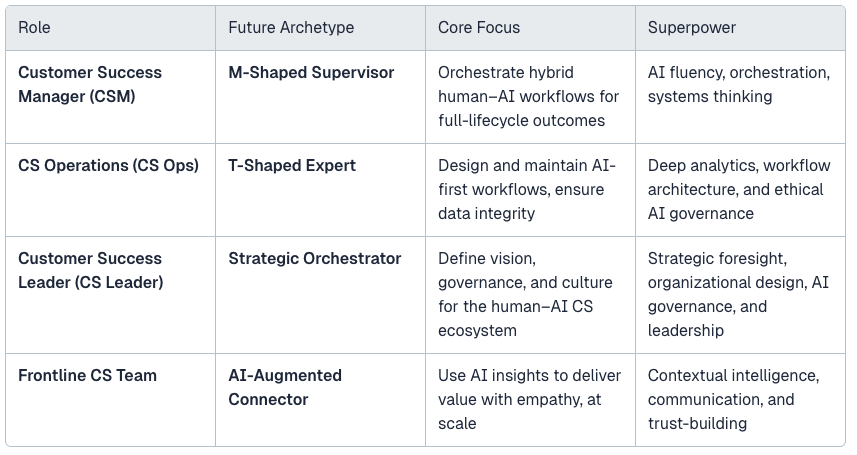
Let us dive into what these new roles will look like
1️⃣ The CS Leader: The Strategic Orchestrator
CS Leaders will shape a new era of Customer Success driven by intelligence, empathy, and accountability. They define and communicate AI vision, govern ethical AI and data transparency, align outcomes with strategy via AI insights, foster learning and empathy, and promote collaboration across teams to enhance customer value.
Think: Visionary architect balancing governance, innovation, and trust.
2️⃣ The M-Shaped Supervisor: The Orchestrator (Customer Success Manager)
This archetype is the Customer Success Manager (CSM), bridging AI accuracy with human empathy to ensure customer success. You lead hybrid teams of people and AI, guiding workflows, translating AI insights, and optimizing systems for fairness, performance, and trust, while balancing scale with empathy.
Think: Strategic depth across AI, empathy, and leadership.
3️⃣ The T-Shaped Expert: The Engine Builder (CS Ops)
CS Ops is the new power core. You build AI-driven systems for onboarding, adoption, engagement, data pipeline governance, bias detection, integrating workflows across CRM and product ecosystems, and handling exceptions that require AI context.
Think: Precision architect with broad collaboration instincts.
4️⃣ The AI-Augmented Connector: The Human Edge (Frontline CS Professionals)
This archetype depicts frontline Customer Success professionals, not AI agents. These humans leverage AI insights to personalize engagement, scale empathy, and build trust. Your AI co-pilot provides signals; you craft the story. You lead data-driven conversations, personalize at scale with AI, and serve as the emotional and ethical anchor in relationships.
Think: Human intuition amplified by AI intelligence.
Bringing it together:
Here are the three qualities of the organisational architecture that we believe should work.
Structure: Pod-based networks — 2–3 M-shaped supervisors + 1 T-shaped expert + 50–100 AI agents.
Culture: Empathy, transparency, and continuous learning.
Metrics: Focused on customer value delivered with empathy at scale, not just operational throughput.
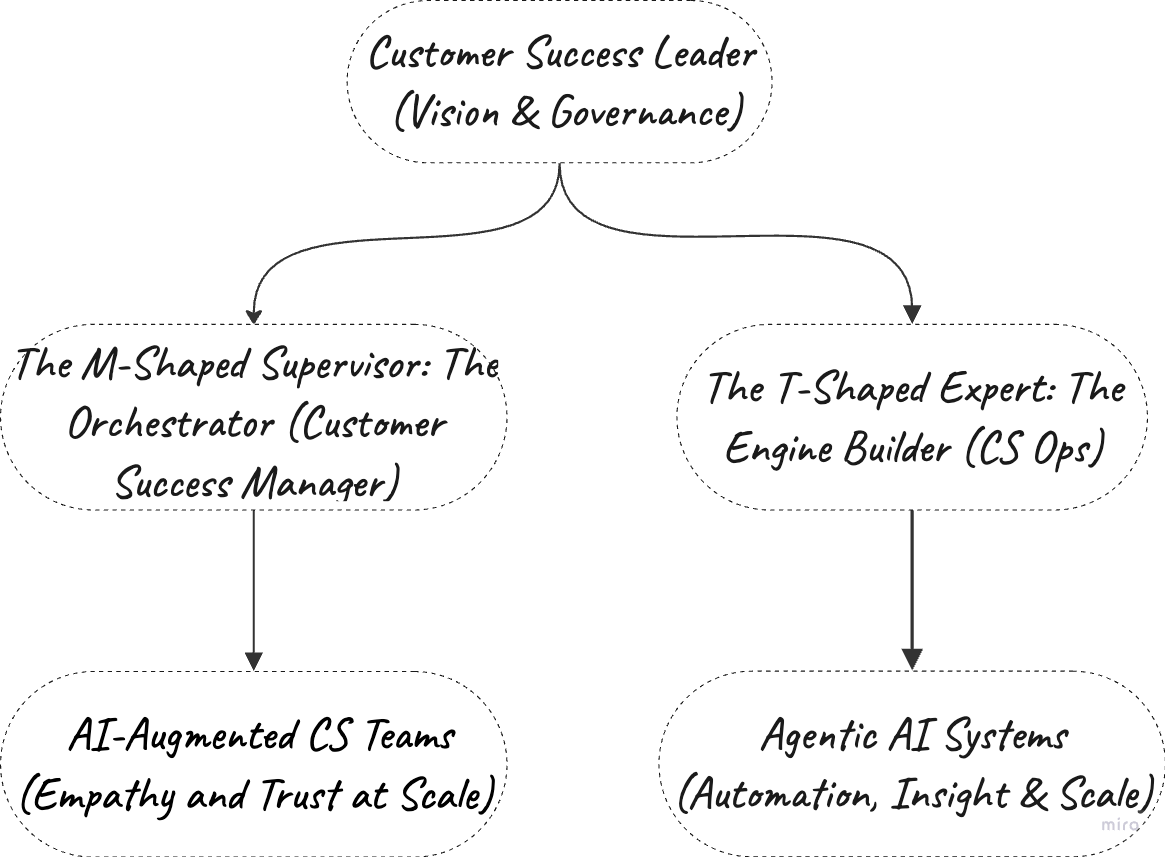
The Bottom Line: Orchestrate or Be Orchestrated
Customer Success isn’t about executive playbooks or dashboards — it’s about delivering value with empathy, at scale. The best teams won’t just use AI; they’ll choreograph it. Those who master this balance between human connection and algorithmic intelligence will define the next decade of Customer Success.
Frequently Answered Questions
Q: What are the key benefits of adopting an AI-integrated CS model for businesses? A: Businesses can achieve significant benefits, including increased operational efficiency, improved customer satisfaction through personalized and timely support, better retention rates due to proactive issue resolution, and enhanced scalability without a proportional increase in human resources. Platforms like FunnelStory AI can help orchestrate these benefits by providing the tools for seamless AI integration.
Q: What role does "empathy at scale" play in the future of AI-augmented Customer Success? A: Empathy at scale means using AI to understand customer needs and sentiments more deeply and then empowering human professionals to deliver tailored, empathetic responses efficiently. AI provides the insights, but humans provide the emotional intelligence and nuanced understanding that build lasting trust and value.
Q: How can FunnelStory AI help my organization transition to this new era of Customer Success? A: FunnelStory AI provides advanced tools and platforms designed to facilitate the integration of AI into your CS workflows. From enabling M-shaped supervisors to orchestrate human-AI teams to empowering AI-augmented frontline workers with contextual intelligence, FunnelStory AI helps you build adaptive networks that drive customer value with precision and empathy.
